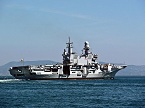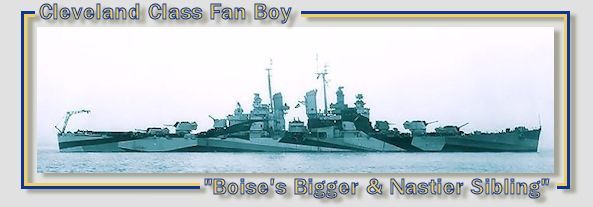TheLoneGunman_MatrixForum
Posts: 312
Joined: 1/12/2010
Status: offline

|
Malaya
Japanese efforts in the region rely on the swift conquest of Singapore from the enemy. Initial landings were conducted at Kota Baru with Ki-27 Nates and Ki-43 Oscars providing CAP over the landing sites with several of the Nates also outfitted with small 50kg bombs to strike the enemy airfield. Ki-21 Sally bombers were also dispatched to provide ground support for the invasion. Oscars were ordered to sweep the surrounding areas, and more Sallies and Lily bombers were to strike Alor Star.
quote:
Morning Air attack on Kota Bharu , at 51,75
Weather in hex: Clear sky
Raid spotted at 17 NM, estimated altitude 12,000 feet.
Estimated time to target is 5 minutes
Japanese aircraft
Ki-21-IIa Sally x 31
Ki-27b Nate x 40
Allied aircraft
Buffalo I x 1
No Japanese losses
No Allied losses
Allied ground losses:
102 casualties reported
Squads: 0 destroyed, 5 disabled
Non Combat: 0 destroyed, 5 disabled
Engineers: 0 destroyed, 1 disabled
Airbase hits 7
Airbase supply hits 3
Runway hits 31
--------------------------------------------------------------------------------
Morning Air attack on Georgetown , at 49,74
Weather in hex: Clear sky
Raid spotted at 15 NM, estimated altitude 16,000 feet.
Estimated time to target is 5 minutes
Japanese aircraft
Ki-43-Ia Oscar x 24
Allied aircraft
Blenheim IF x 2
No Japanese losses
Allied aircraft losses
Blenheim IF: 1 destroyed
Aircraft Attacking:
23 x Ki-43-Ia Oscar sweeping at 15000 feet
CAP engaged:
No.27 Sqn RAF with Blenheim IF (2 airborne, 0 on standby, 0 scrambling)
2 plane(s) intercepting now.
Group patrol altitude is 6000
Raid is overhead
--------------------------------------------------------------------------------
Morning Air attack on Alor Star , at 49,73
Weather in hex: Clear sky
Raid spotted at 27 NM, estimated altitude 12,000 feet.
Estimated time to target is 7 minutes
Japanese aircraft
Ki-21-IIa Sally x 48
Ki-27b Nate x 19
Ki-43-Ib Oscar x 13
Ki-48-Ib Lily x 55
Allied aircraft
no flights
No Japanese losses
Allied aircraft losses
Blenheim I: 19 damaged
Blenheim I: 1 destroyed on ground
Airbase hits 28
Airbase supply hits 10
Runway hits 90
--------------------------------------------------------------------------------
Afternoon Air attack on Singora , at 51,72
Weather in hex: Clear sky
Raid spotted at 17 NM, estimated altitude 8,000 feet.
Estimated time to target is 5 minutes
Japanese aircraft
Ki-27b Nate x 20
Allied aircraft
Blenheim IF x 3
Buffalo I x 13
No Japanese losses
Allied aircraft losses
Blenheim IF: 1 destroyed
CAP engaged:
11th Sentai with Ki-27b Nate (4 airborne, 12 on standby, 0 scrambling)
4 plane(s) intercepting now.
Group patrol altitude is 10000 , scrambling fighters to 10000.
Time for all group planes to reach interception is 8 minutes
1st Sentai with Ki-27b Nate (0 airborne, 4 on standby, 0 scrambling)
Group patrol altitude is 10000 , scrambling fighters to 10000.
Time for all group planes to reach interception is 8 minutes
--------------------------------------------------------------------------------
Afternoon Air attack on Singora , at 51,72
Weather in hex: Clear sky
Raid spotted at 10 NM, estimated altitude 7,000 feet.
Estimated time to target is 3 minutes
Japanese aircraft
Ki-27b Nate x 18
Allied aircraft
Hudson I x 3
No Japanese losses
Allied aircraft losses
Hudson I: 1 destroyed
CAP engaged:
11th Sentai with Ki-27b Nate (0 airborne, 4 on standby, 0 scrambling)
10 plane(s) not yet engaged, 0 being recalled, 0 out of immediate contact.
Group patrol altitude is 10000 , scrambling fighters between 6000 and 10000.
Time for all group planes to reach interception is 68 minutes
1st Sentai with Ki-27b Nate (0 airborne, 0 on standby, 0 scrambling)
4 plane(s) not yet engaged, 0 being recalled, 0 out of immediate contact.
Group patrol altitude is 10000 , scrambling fighters to 12000.
Time for all group planes to reach interception is 40 minutes
--------------------------------------------------------------------------------
Afternoon Air attack on TF, near Kota Bharu at 51,75
Weather in hex: Clear sky
Raid spotted at 19 NM, estimated altitude 15,000 feet.
Estimated time to target is 6 minutes
Japanese aircraft
Ki-27b Nate x 21
Ki-43-Ib Oscar x 7
Allied aircraft
Blenheim IV x 6
No Japanese losses
Allied aircraft losses
Blenheim IV: 1 destroyed
Blenheim IV: 1 destroyed by flak
CAP engaged:
11th Sentai with Ki-27b Nate (8 airborne, 0 on standby, 0 scrambling)
(7 plane(s) diverted to support CAP in hex.)
8 plane(s) intercepting now.
2 plane(s) not yet engaged, 0 being recalled, 0 out of immediate contact.
Group patrol altitude is 10000 , scrambling fighters between 6000 and 11000.
Time for all group planes to reach interception is 11 minutes
1st Sentai with Ki-27b Nate (4 airborne, 0 on standby, 0 scrambling)
(4 plane(s) diverted to support CAP in hex.)
4 plane(s) intercepting now.
4 plane(s) not yet engaged, 0 being recalled, 0 out of immediate contact.
Group patrol altitude is 10000 , scrambling fighters to 12000.
Time for all group planes to reach interception is 23 minutes
64th Sentai with Ki-43-Ib Oscar (0 airborne, 0 on standby, 0 scrambling)
7 plane(s) not yet engaged, 0 being recalled, 0 out of immediate contact.
Group patrol altitude is 15000 , scrambling fighters to 12000.
Time for all group planes to reach interception is 13 minutes
77th Sentai Det A with Ki-27b Nate (3 airborne, 0 on standby, 0 scrambling)
3 plane(s) intercepting now.
Group patrol altitude is 10000
Raid is overhead
British bombers attempted to disrupt the invasion at Kota Baru and the landings at Singora and Patani, but were shot down or driven away. No Japanese shipping was lost or even damaged during the operations. Securing Kota Baru alone will not be enough to cut off and capture Singapore. What is needed is to capture a large enough airfield that can house naval bombers for an interdiction campaign across Southern Malaya and portions of the Dutch East Indies.
Borneo
Luckily for the Japanese, such an airfield already exists at Singkawang. Pre-war intelligence indicated that the area was only lightly defended, but was close enough to Singapore and Johore Bahru that it was vulnerable to enemy air attacks. This made an invasion risky, but the rewards of a successful landing would be far greater, especially if surprise was achieved. In an attempt to supress British bombers from striking the invasion force, the Imperial Japanese Navy launched an airstrike on the airfields located at Johore Bahru. A large surface action group being led by the battleships Kongo and Haruna would provide cover for the operation to dissuade the Prince of Wales and Repulse from intervening. On their way to Singkawang, the battleships score the first confirmed ship sinking of the war by destroying the XAKL Dai Tung with only two hits.
quote:
Day Time Surface Combat, near Kuantan at 53,78, Range 20,000 Yards
Japanese Ships
BB Kongo
BB Haruna
CA Takao
CA Atago
CL Jintsu
DD Asashio
DD Oshio
DD Michishio
DD Arashio
DD Akatsuki
DD Hibiki
Allied Ships
xAKL Dai Tung, Shell hits 2, and is sunk
--------------------------------------------------------------------------------
Morning Air attack on Johore Bahru , at 50,83
Weather in hex: Clear sky
Raid spotted at 18 NM, estimated altitude 13,000 feet.
Estimated time to target is 6 minutes
Japanese aircraft
A6M2 Zero x 18
G3M2 Nell x 72
G4M1 Betty x 27
Allied aircraft
no flights
Japanese aircraft losses
G3M2 Nell: 1 damaged
Allied aircraft losses
Wirraway: 9 damaged
Allied ground losses:
8 casualties reported
Squads: 0 destroyed, 0 disabled
Non Combat: 0 destroyed, 1 disabled
Engineers: 0 destroyed, 0 disabled
Airbase hits 27
Airbase supply hits 15
Runway hits 95
No enemy bombers ever attempt to attack the Singkawang invasion force, the results are credited to the successful bombing of Johore Bahru and a lack of fighter escorts with enough range to reach the area. As a result, none of the ships are sunk or damaged during landing operations.
Philippines
The invasion of the Philippine Islands is another important early objective for the Japanese Army. It is essential that the bulk of Philippine and American ground forces be routed early on so that operations elsewhere may continue unabated. To accomplish this, Japanese military planners have called for a bold invasion of Luzon in close proximity to Clark Field and the US Asiatic Fleet. A spearhead landing at Iba would place Japanese troops close enough to Clark field to capture it within days, while Iba itself was expected to fall on December 8th. By seizing Clark Field, the Japanese will have successfully driven a wedge between the largest concentrations of Allied troops on the island, dividing Bataan and Subic Bay from Manila. Then, Japanese troops would proceed toward Manila, and only after seizing the city would operations against the remnants in Bataan need to take place.
Weary of American airstrikes, the Japanese would attack Clark Field in the morning with over 100 bombers from both the Army and Navy. Several squadrons of cruisers and destroyers would also be included in the operations to ward off enemy surface forces as well as submarines. In addition, it was deemed critical that the forces located in Northern Luzon not be allowed a direct route toward Manila, so the Yokosuka 1st SNLF would conduct a paratroop landing of Cabanatuan. It was determined that any attempt by the enemy to dislodge the forces at Cabanatuan would cost them in terms of defense to Manila, and that if the main invasion force at Iba could move quickly enough that the paratroops would be able to link up within a week's time.
quote:
Morning Air attack on Clark Field , at 79,76
Weather in hex: Clear sky
Raid spotted at 34 NM, estimated altitude 13,000 feet.
Estimated time to target is 11 minutes
Japanese aircraft
A6M2 Zero x 90
G3M2 Nell x 36
G4M1 Betty x 54
Ki-21-IIa Sally x 18
Ki-48-Ib Lily x 27
Allied aircraft
P-26A x 4
No Japanese losses
Allied aircraft losses
P-26A: 2 destroyed
P-35A: 1 destroyed on ground
Airbase hits 28
Airbase supply hits 3
Runway hits 74
--------------------------------------------------------------------------------
Ground combat at Cabanatuan (80,76)
Japanese Shock attack
Attacking force 369 troops, 6 guns, 0 vehicles, Assault Value = 24
Defending force 0 troops, 0 guns, 0 vehicles, Assault Value = 0
Japanese adjusted assault: 18
Allied adjusted defense: 1
Japanese assault odds: 18 to 1 (fort level 0)
Japanese forces CAPTURE Cabanatuan !!!
Allied aircraft
no flights
Allied aircraft losses
B-10B: 1 destroyed
Combat modifiers
Attacker: shock(+), leaders(-)
Assaulting units:
Yokosuka 1st SNLF /1
With Clark Field reduced to smoldering ruins, the invasion of Iba occurs without incident. No Allied bombers attempt an attack on the invasion force, and the Yokosuka 1st SNLF successfully seizes Cabanatuan from the enemy, also reporting that it discovered and destroyed an enemy bomber in the area.
Moluccas and Celebes
Landing operations begin at Ambon and Kendari. A small contingent of Dutch bombers attacks the task forces at Kendari but fails to score any hits. Neither invasion suffers any ship losses. Both bases are expected to fall on the 8th.
Rabaul
The highlight of our bold and aggressive strategy. Rabaul is bombarded by Japanese cruisers and destroyers covering an invasion of the area. It is essential that the base fall quickly, or the troops landed there could easily become isolated by Allied air and sea power. The light cruiser Nagara and the destroyers Umikaze, Kawakaze, and Yukikaze will remain on station to protect the landing force from Allied warships. There are no ships lost on day one of operations, the British are taken by complete surprise and offer no resistance from the air.
China
Chinese forces seem to be preparing for an attempted push into Ichang. Efforts to reinfoce the area are underway while Army High Command considers a withdrawal from the area. Forces progress towards Hong Kong and bombers strike the Hong Kong airfields damaging several British bombers.
Overall
It is critical to the pace of Japanese operations that the Imperial Japanese Military strike deep into enemy territory. Airfields, ports, and any areas capable of producing indigenous supply will be prioritzed first. All other areas can be starved and conquered in follow-up operations so as not to slow the rate of expansion. Ambon, Kendari, Iba, Singkawang, and Kota Baru are all expected to fall on December 8th. Rabaul may hold out for more than one day, but barring any unforseen circumstances should be seized by the Japanese within a week's time.
This will put major pressure on Allied shipping in several regions, denying them the ability to organize an effective retreat from areas such as Singapore and the Philippines. Hopefully, Allied naval losses will increase sharply as a result of these actions, and Japan will be able to deny transfer of supply throughout the region. Follow-up invasions are also being planned or are underway, with a task force already en route to Kuantan in Malaya, and a force steaming towards Palambang that can easily be diverted to Mersing if needed.

Only 5 Japanese aircraft are lost in the entire day's worth of operations. The only two pilots killed were the pilots of two bombers shot down over Pearl Harbor during the attack. Meanwhile, the destruction to the Allied air forces is great, and does not include damage inflicted to hundreds of other airframes that must now be repaired.
The Japanese report no ships lost, and the only ship to be confirmed sunk from the Allies is the Dai Tung.
All of our planning and efforts have bore fruit. It is a glorious day for the Empire.
|
 Printable Version
Printable Version











 If you want the R&D factory to NOT go into production, the buttons to the right of the airframe need to be set to N-Y-N.
If you want the R&D factory to NOT go into production, the buttons to the right of the airframe need to be set to N-Y-N. 





 New Messages
New Messages No New Messages
No New Messages Hot Topic w/ New Messages
Hot Topic w/ New Messages Hot Topic w/o New Messages
Hot Topic w/o New Messages Locked w/ New Messages
Locked w/ New Messages Locked w/o New Messages
Locked w/o New Messages Post New Thread
Post New Thread